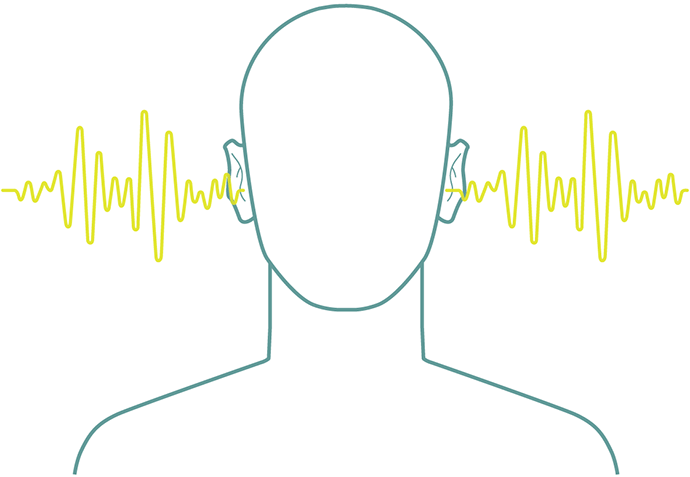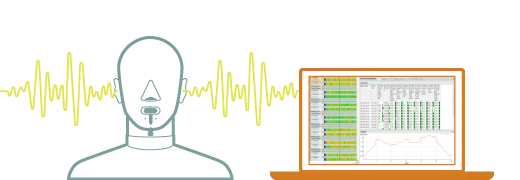
Sound Quality For Improving Your Product
With higher sound quality, overall perceptions of product quality are raised – leading to increased sales and greater brand equity.
Consumers identify sound as a major component in the overall sound quality of any product – from cars to hand tools and heavy machinery. Although some product noise is inevitable, it can often be transformed into a suitable sound, such as the weighty thud of a high-quality car door, or even a desirable sound, such as the throb of a high-performance motorcycle.
A higher sound quality raises overall perceptions of product quality, which leads are raised – leading to increased sales and greater brand equity.
Objective and Subjective Sound Quality
Designing specifically for sound quality is challenging since ‘desirable’ sound quality is determined by how we perceive sound, using our ears and brains. Sound measurements such as frequency response describe the nature of the sound itself, but don’t measure the physical processes that take place in our ears, nor the cognitive processes in our brains.
However, all of these factors contribute to our subjective sound experience. To give designers clear targets that account for the whole picture and allow effective sound engineering, you need to quantify sound quality.
Sound Quality Metrics
Humans perceive some sounds more easily than others, so we can add weight to these using sound quality metrics such as Zwicker Loudness. In the end, however, only the human ear can tell the designer whether or not the product has the right sound. This means subjective testing of customer expectations is important when determining acceptable sound quality.
Jury testing allows listeners to rank sounds and score them for qualitative sound quality metrics like roughness. Analysis software translates these into objective values, thus giving engineers the sound target inputs they need to aim for, such as a certain amplitude vs. frequency profile. During development, you can apply this methodology to design changes, and to evaluate them as you optimize the sound quality for your product..
Studies have established that sound plays a major role in consumers’ perception of a product’s quality. Sound quality has been important to the automotive industry for decades and now is also a primary concern for manufacturers of consumer appliances, office equipment, power tools, marine equipment, off-highway construction vehicles, farm equipment, and other products.
Achieving desirable sound quality is a much more sophisticated process than simply determining that a measured sound is ‘too loud.’ It requires tools that can identify key characteristics of the sound that correlate to consumer perceptions of quality. These tools must be able to identify those aspects of the design that can be modified to eliminate specific, objectionable sounds and yet retain appropriate, desirable sounds. Those tools are part of Brüel & Kjær’s Automotive Sound Quality software product range.
System suggestion
Brüel & Kjær’s Automotive Sound Quality software gives you tools for recording, analyzing, auditioning, dissecting and synthesizing sounds. It enables you to set objective and achievable quality targets for your products, specified in engineering terms. Despite its name, it is not exclusive to automotive sound quality; in fact, it is just as applicable to any industry.
Automotive Sound Quality Bundle BZ-6047 comprises four sound quality modules, containing tools to diagnose sound quality problems and produce desirable design targets.
Related products
Sound quality metrics are well-established as a sound and vibration engineering tool. Rather than simply quantifying sound pressure levels, sound quality metrics seek to predict human response to sound stimuli, and provide an objective measure of perceived sound quality.
The field of psychoacoustics has provided many different types of metrics, each designed to deal with particular aspects of human perception or with different types of sound. Some of these metrics have been standardized by ISO (International Organization for Standardization), ANSI (American National Standards Institute) and DIN (Deutsches Institut für Normung) so that they can be implemented consistently by suppliers of acoustics measurement systems.
System suggestion
BK Connect Sound Quality Metrics Type 8405-G provides a set of the most common metrics in use today. These are, whenever possible, implemented according to standards or, when not covered by standards, they are implemented according to widely accepted methods in the public domain. These metrics have undergone an extensive programme of validation using commonly accepted stimuli with known outcomes.
Type 8405-G can be combined with BK Connect Data Processing Specialist , for basic sound quality engineering including binaural audio playback, fast spectrogram display, and interactive filtering. Additionally, BK Connect Time Data Recorder can be used to acquire data for sound quality analysis

Iscriviti alla nostra Newsletter e ricevi le informazioni più recenti dal mondo del suoni e delle vibrazioni



